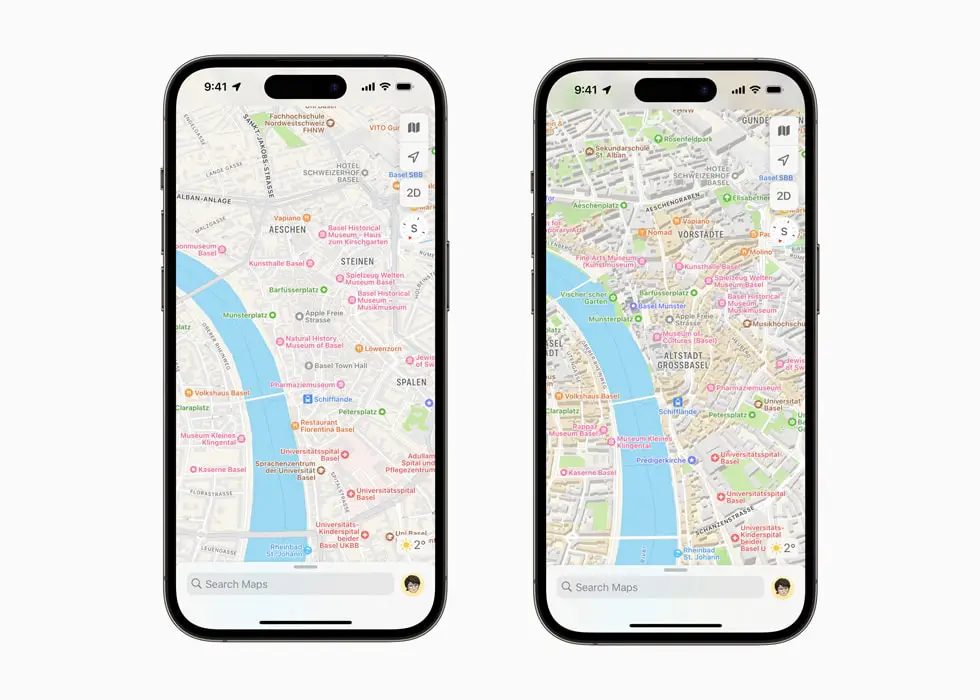Although most local SEO efforts focus on optimizing for Google Maps, it’s equally valuable to list your business on Apple Maps. Between 82 to 110 million people in the U.S. used Apple Maps in 2024. It’s their default navigation tool, which makes it an important platform to consider.
When Apple introduced Business Connect, a free tool for business owners to manage their listings on Apple Maps, it was met with excitement in the SEO community. Finally, Apple empowered businesses to claim and optimize their listings. This is something that had previously been out of users hands. Use this guide for Apple Maps business listing to get you from setup to success.
Why List Your Business on Apple Maps
Reach Over a Billion Apple Users
Apple Maps is the default navigation app for iOS devices and integrates seamlessly with Siri and other Apple services. It has become a powerful tool for local discovery with billions of searches conducted on it each year.
Boost Your Rankings
While Google Maps dominates in market share, Apple Maps has its own set of advantages, including integration with iOS features and a streamlined interface. Local businesses using both platforms can maximize visibility across diverse user bases.
Improve Visibility with Reviews and Voice Search
Apple Maps also gives you another place to collect reviews and strengthen your online reputation. Reviews are crucial, especially on platforms like Yelp, which Apple Maps relies on heavily. If your average rating is below 4 stars, Siri might skip over your business entirely when people search by voice. And with voice assistants like Siri becoming more popular, making your business voice-search friendly is a smart move.
Insights with Apple Business Connect
Apple Business Connect offers tools similar to Google Business Profile. It can give you insights into how people interact with your listing. These insights can help you fine-tune your local SEO strategy and attract even more customers.
How Do I Set Up an Apple Maps Business Listing?
Personally, I am not a big fan of Business Connect and I’ve experienced challenges when setting up and managing profiles. Here’s a step-by-step guide to claiming your business location.
- Create an Apple ID
Sign up at Apple ID if you don’t already have an account. - Sign in to Apple Business Connect
Access the Apple Business Connect portal and log in with your Apple ID. - Add Your Business Information
- Select “Add a New Business.”
- Enter your business name, location, and contact details.
- Choose a relevant business category.
- Verify Your Business
Verification can be done by adding a TXT code to your hosting account, and by uploading a document (e.g., a lease or utility bill). - Optimize Your Listing
Add photos, a business description, and operational details like hours. Keep your name, address, and phone number (NAP) consistent across platforms
How to Rank to the Top in Apple Maps
- Check if all business information is complete and accurate.
Just like with optimizing your Google Business Profile, the first step in optimizing your Apple Business Connect listing is to make sure all your business information is fully filled out and accurate. It’s important that all business information on Apple Maps match exactly on other platforms like Google Maps, Yelp, and Tripadvisor. This means your business name, address, and phone number (known as NAP) should be the same everywhere. Keeping this information consistent across all websites helps search engines and users trust your business. This is a key part of a successful local SEO strategy, which helps more people find your business online. - Collect reviews from third-party sites.
Apple Maps reviews operate a bit differently than Google Maps. While users can occasionally leave ratings directly within the app, this feature is currently limited to certain areas. However, Apple Maps also pulls reviews from third-party platforms such as Yelp, Tripadvisor, and Vagaro. Since reviews play a key role in rankings, focusing on gathering reviews from these other sites may help improve your business’s visibility and ranking on Apple Maps. - Be cautious of duplicate listings.
Duplicate listings are problematic across all online directories. They confuse algorithms and can result in lower rankings or even suspensions. To avoid this, regularly check Apple Maps for duplicate listings and use the “Report an Issue” feature in the app to have them removed. This not only helps prevent customer confusion but also makes your business information clean and consistent. This consistency is key to a strong local SEO strategy. - Make use of showcases to promote your business.
“Showcases” are a feature in Apple Business Connect that let you highlight certain products or services and encourage customers to take actions, like calling your business or getting directions. By setting up Showcases on Apple Maps, your business will show up more when people search for the things you offer. These Showcases can also help turn people interested in your business into actual customers by making it easy for them to take action right in the Apple Maps app. - Monitor your rankings with Local Falcon.
As you work on improving your Apple Business Connect or Google Business Profile, it’s important to keep an eye on how well you’re doing. Local Falcon helps you do that by checking how your business ranks on Apple Maps in specific areas. You can see how your changes are working, spot any trends, and compare how your business is performing against your competitors.
Will Apple Maps really make a difference to my local SEO?
Google dominates the search market with a huge 89% share, and this also extends to Google Maps, which is used by about 67% of smartphone users, including iPhone owners.
However, recent reports, such as one from Business Insider, suggest that public opinion is shifting toward Apple Maps. More and more people are turning to Apple Maps as they recognize the improvements Apple has made to the app in recent years. Many users even prefer it over Google Maps for its better user experience and interface.
Moreover, millions of iPhone users have always relied on Apple Maps, sticking with it even during its early struggles. Since Siri and other Apple products use information from Apple Maps for local searches, optimizing for Apple Maps is important. So, is Apple Maps really worth the effort? Remember: if you’re targeting iPhone and Apple users, the answer is a definite yes!
Apple Maps Protects User Privacy More Than Google
More people are switching to Apple Maps every day because of the app’s strong privacy features. Apple has made efforts to show they care about user privacy, such as using end-to-end encryption, hiding user locations during searches, and not storing a history of where users have been. This is why privacy-focused search engines like DuckDuckGo prefer Apple Maps over Google, especially since Google has been criticized for collecting too much detailed location data.
Google often asks for more personal information every time you sign in, and even incognito mode seems to know your location, no matter how many times you deny it. With online privacy being such a big concern today, Apple is seen as being ahead of the game when it comes to protecting user data, or at least giving the impression that they are.


